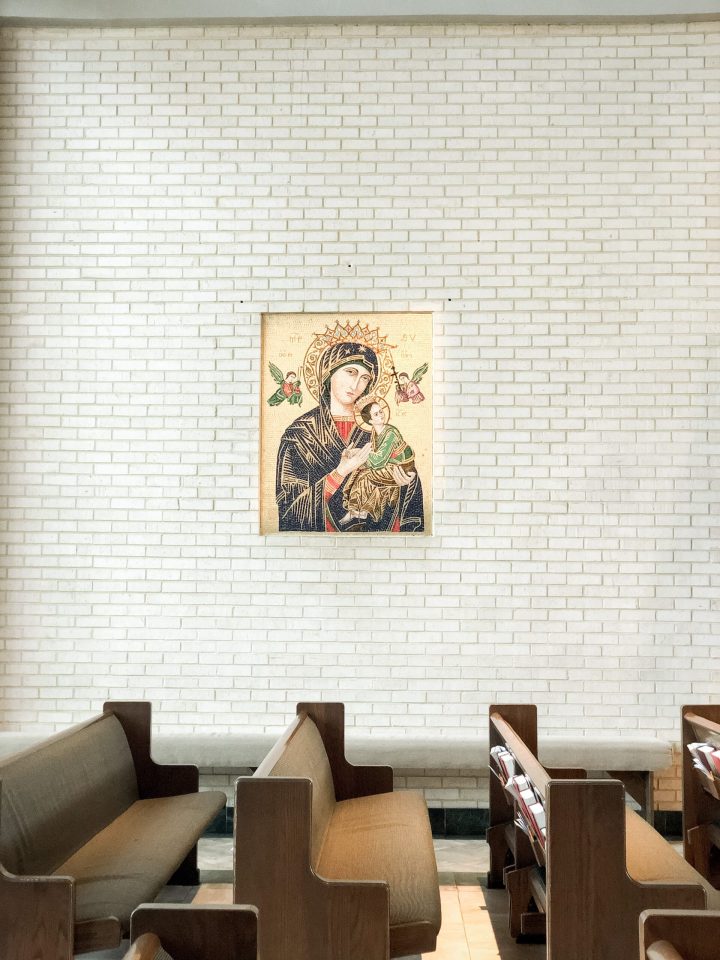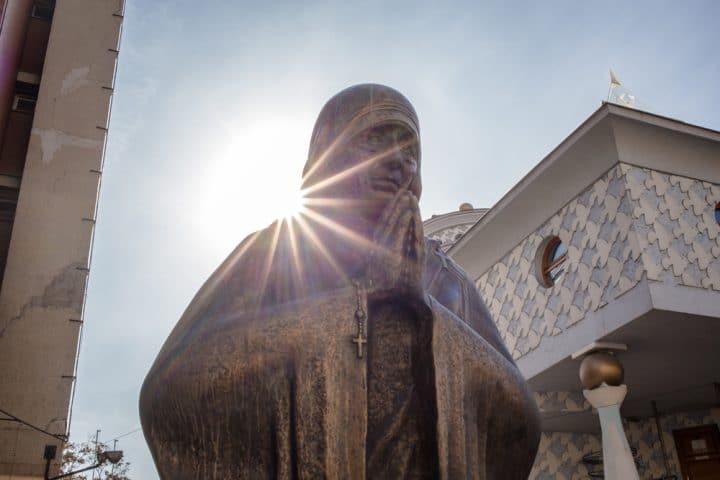
If God sends you many sufferings, it is a sign that He has great plans for you and certainly wants to make you a saint. (St. Ignatius Loyola)
After a young woman leaves the convent, she often struggles to find the support she desperately needs as she navigates her way back into everyday life. Typically, the first place she turns to is her parish for assistance. Unfortunately, many parishes are not well prepared to effectively help her readjust and heal from leaving the convent. It is my hope that, one day, parishes will be better prepared to assist and support former nuns who have recently left the religious life.
I can personally attest to the loneliness and overwhelming grief that can follow leaving the convent. When I left for the second time several years ago, I felt lost and broken. The pain I experienced was all-consuming, and I feared I would never recover. It wasn’t until I connected with other women who had similar experiences through online support groups that I began to heal. O Mi Jesu is one such group, and it is a chapter of the Maria Goretti Network that provides peer support specifically for former religious sisters.
Finding solace in the testimonies of other women who left the convent, shared on platforms like Leonie’s Longings and Call for Convent Reform, was a significant source of comfort for me. Many of their stories resonated with my own, and it was reassuring to know that I was not alone in my struggle to assimilate back into the world and undergo the gradual healing process. For a young woman who has left behind everything to dedicate her life to God and His Church, leaving the vocation to religious life can be devastating and cause significant distress.
I am grateful for the priests who supported me during my reintegration back into the secular world, and I have addressed this topic previously about how my pastor was an integral part of my journey towards healing, and even in the last days before I left the convent. I have come across a number of articles about young women who have written about their great expression of thanks to the priests in their lives who were a huge support for them after leaving the convent. This is not a unique experience, because our spiritual fathers would want to be there for us in our time of need, especially when they were the ones who cheered us on when we were entering into religious life.
For many of us, our priests are at first the only ones who we feel comfortable enough with to share our stories. However, while their intentions may be good, I found that their attempts to relate to my experience more often were not beneficial on my road to healing. They would share stories of their own time in the seminary or at their first parish, hoping to show that they understood what I was going through.
The reality, however, was that they could not fully comprehend my situation. They still had their vocation to the priesthood, even after their own struggles and challenges. In contrast, I had lost the vocation that I believed God had called me to in an instant. One moment, I was receiving the white veil as a novice, and the next, I was placing my habit and rosary on my bed for the final time and leaving the convent forever.
When a seminarian leaves the seminary it seems that for the most part priests know how to offer comfort and consolation to the young man because they may have had a similar experience, but the convent for a priest is very much unfamiliar territory. And of course it would be for a priest as well as any member of the laity who has not lived inside a convent because the image that we see of a community with eyes on the outside simply may not match the genuine truth of life within the community.
Priests along with others who work with former religious sisters are often ill-equipped to effectively assist a woman in transitioning out of the convent and back into the world. More resources need to be available to aid those who work with former religious sisters because as time passes more and more women are in need of help after returning to their former state of life. As a co-leader for the Maria Goretti Network I see first hand that there is a significant need in the Church for there to be more support available for former nuns who still hold a lot of pain and hurt in their hearts. Leaving the convent is a part of the vocational journey for some women, and it is crucial that both priests and laypeople are aware of this and have the necessary resources to support the young woman as she heals and moves forward.
Young women who leave the convent often require assistance with basic needs such as finding a place to live, opening a bank account, establishing credit, purchasing a car, and updating their resumes. Those who work with these women should be able to offer them proper resources and guidance. It is essential that those who help former nuns know about Leonie’s Longing, the non-profit organization that provides resources for young women who have left the convent. The Leonie’s Longing website offers information on career exploration, mental health, and blog posts by women who have left the convent.
It is also important that those who do vocation work do not provide false hope to women discerning religious life. Often the vocation pitch is that if a young woman feels called to religious life and enters a community then she will become a nun for the rest of her life. That is simply not always the case because discerning a religious vocation is a two way street; a young woman may feel called to a particular community, but then at the end of the day, it is the community’s decision whether she stays in the convent or returns to the world. It is not as simple as it often sounds during a vocation talk or discernment retreat.
It is unfortunate that those who work with former religious sisters often lack the necessary experience and knowledge of life inside the convent, which can hinder their ability to provide effective support. The glossy posters and websites that depict religious life do not accurately reflect the reality of convent life, which can be far from idyllic. Many women who have left the convent experience grief, heartache, depression, anxiety, post-traumatic stress disorder, anger, resentment, and a range of other emotions resulting from possible traumatic experiences within the convent walls. An organization that was referred to me by another young woman who had left the convent, and had experienced abuse was Grief to Grace, which offers in-person retreats for those who have suffered from abuse, and are in need of healing.
We still have a long way to go in understanding how to best support those who have left the religious life. However, as more women share their personal testimonies, there is a growing awareness of what former nuns need when they leave the convent and even as time passes since their departure. There are no statistics currently available that inform us of how many women actually depart from the religious life each year, but if we look at the CARA studies and reports provided by the National Religious Vocation Conference we can observe how many women since 2015 have entered the convent, and how many women have made their solemn profession since 2011.
It is important that young women who leave the convent understand that it does not mean that they have failed or that they were not good enough to make it in religious life. They may feel humiliated in front of friends and family or even their own parish that they did not persevere in religious life, but we all have our own unique journey in this life. Departing from their religious community may have been the best option at the time for the sake of their physical, emotional and spiritual health even if they do not realize that to be true.
Additionally, it is also important that the Church recognizes that all vocations share the same call to holiness whether that be in the religious life or to another state in life. This includes providing the necessary support and resources for those who are former religious sisters as well as bringing more to light the significant role that everyday Catholics play in the Church. We are all called to carry out our baptismal calling as members of the Mystical Body of Christ.
Adapting from life in the convent to back in the world often can be both a challenging and grief-stricken journey for a number of young women as they gradually undergo the healing process. The same women who were celebrated and encouraged as they began their discernment of religious life should not be abandoned if they end up not remaining in the convent. The Church as a whole should have the goal to better understand and become supportive of those who are no longer religious sisters by providing much needed resources and assistance.
By accomplishing such a feat, we can show these young women that they still have dignity as being a daughter of the King, and have not failed God or the Church. It can help them to heal and thrive on their new path towards holiness and unity with God. They are still beloved children of God, and He has a plan for them. Leaving religious life is not the end of their journey, but rather a change in the course of their path moving heavenward.
Photo by Ricardo Gomez Angel on Unsplash



